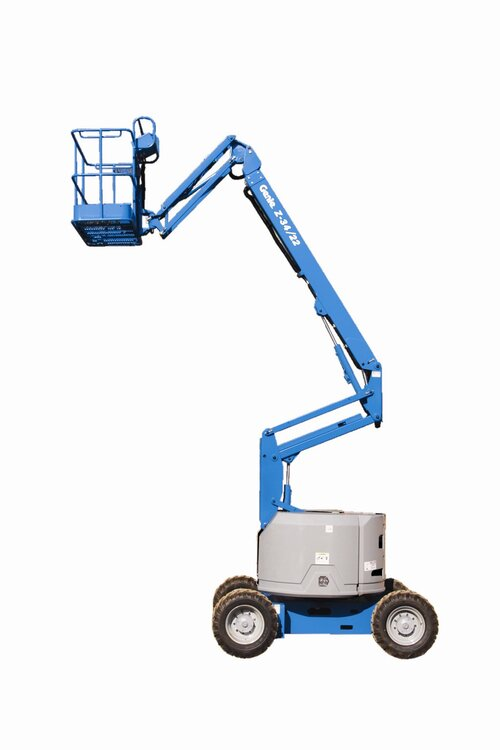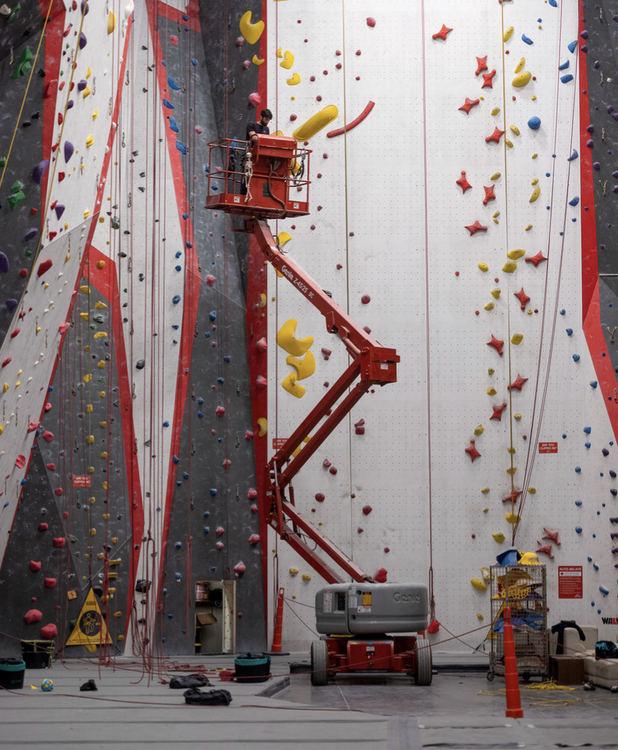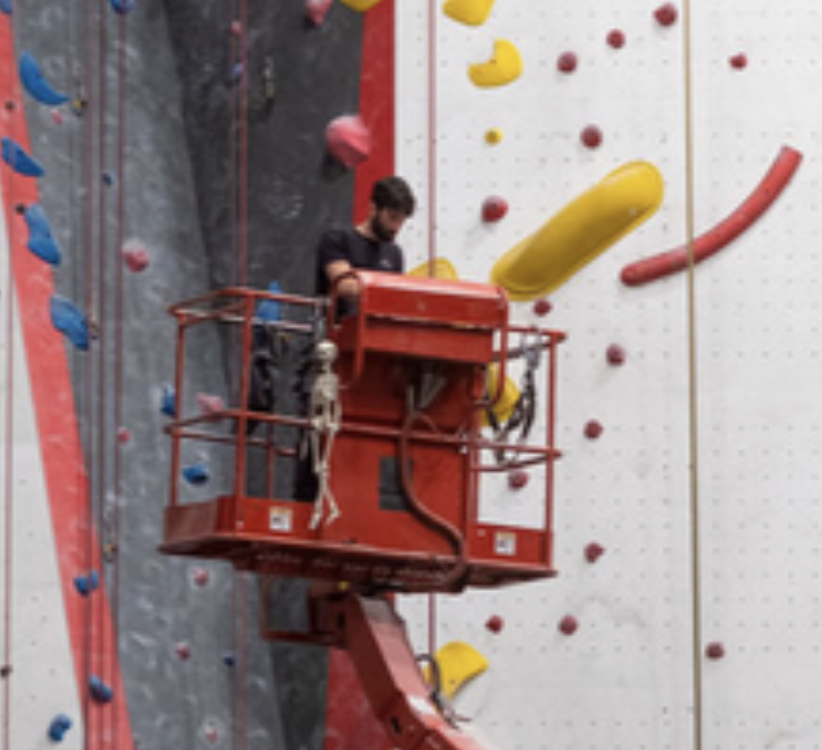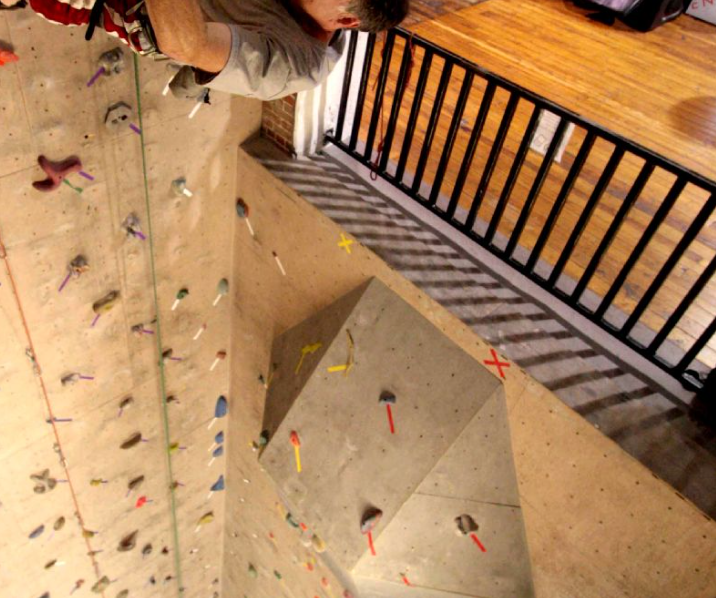Setter dies while setting routes in a gym
|
|
John RB wrote: Gyms that don't have lifts probably aren't set up for them. You can't just roll some big ass lift onto your padded floor, plus you have to store the thing somewhere. |
|
|
claudio ricardez wrote: I can't speak for all of them but setting off of a lift is much preferred. No manual hauling of holds, not in a harness, easier to move around, etc. You get pretty good at setting a skeleton and then forerun. From what I've seen someone foreruns and someone tweaks it from the lift at the same time. |
|
|
anyone here ever actually brought a scissor lift inside? maybe you guys are talking about some other kind of lift? We got a scissor lift into a big barn style restaurant we were building. It was a big and sketchy deal getting it in and out without destroying the big brand new Marvin sliding doors... |
|
|
Nick Goldsmith wrote: This is sooo true. A couple weekends ago, I TRS’d an 80’ ish foot cliff, then the next day climbed maybe 15’ up a ladder to change an exterior light and I was completely sketched out. Hahaha. |
|
|
Ladders are number one OSHA for causing workplace injury. Nick is absolutely right that its wild what you can do with a ladder, but other relatively tame things are not allowed to fly without some fall pro, or safety. |
|
|
Tone Loc wrote: Did you TRS the walk to the anchors to set up? No? OSHA says you should’ve been waaaay more sketched out doing that than whatever you were doing on your ladder.
|
|
|
Mr Rogers wrote: |
|
|
Ideally the facility would be designed from the start to get that awesome looking lift in there. |
|
|
amarius wrote: Exactly. |
|
|
Slim Chuffer wrote: It's often not that hard to cut up a padded floor into modules and you can store a lift in the parking lot if you have a loading door. (Most gyms do, in my experience). I've seen gyms that retrofit for lifts. If you have floors that are not at street level, then you're screwed. |
|
|
Mr Rogers wrote: Statistically speaking ladders and aerial lifts have higher accident rates than Rope Access. Aerial lifts and Rope Access or any proper single rope technique equivalent have the same problem. They all cost a lot of money in comparison to the alternative of just grabbing a GriGri and figuring it out on the fly. No rescue plan, no JSA, likely little PPE, no formal training. I was at a gym on the East coast who set with a lift. There was no way to use the emergency release if it failed due to obstructions below it. However, they also had no idea how they would get someone down in a rescue scenario, the person in the lift wasn’t tied off, no helmet being used and nothing was tied off. You have a slew of OSHA related potentials that kill/hurt far more people than any proper rope technique equivalent. End of the day is climbing gyms squeak by on regulations and workplace accidents because it’s an obscure place where you are doing these activities without much oversight and the owners are also untrained in these areas. imagine explaining to every gym they need to spend the $ on general industry work at height and implement safety programs for such? |
|
|
I used a lift for setting a bit and they kind of freaked me out. They were great for quickly stripping a wall and for maybe quickly throwing up a rough route, but I much preferred and felt a lot safer with a good rope, a jumar and grigri with stopper knots for fine tuning. With the lift I just ended up doing more sketchy stuff when nobody was looking. Using climbing gear and techniques that I was familiar with from outdoors setting, I had my protocol down and followed it I can't imaging setting with a full osha approved set up. What a pain in the ass that would be. That said, definitely a lot of sketch stuff would go on back in the era when I was actively setting. I am surprised there haven't been more accidents, particularly people walking below a not properly closed off work space and getting clunked in the head. |
|
|
Matt H wrote: Full arm out on 120' boom.... is it ever surprising how much the tiniest lateral movement makes the bucket end move soooo much. Make sure that thing is in turtle mode is no joke when they get big and your way out from your pivot! |
|
|
I have my hands full using a 40ft lift trying not to ding the house etc. can't even fathom a 120 ft lift . I didn't even know they existed. |
|
|
Nick Goldsmith wrote: 210ft is the biggest thats not a semi truck style crane/lift! Snorkel lift makes it. Outrageous. I would be puckered for sure. |
|
|
Awhile back world class climber Scott Cosgrove was injured this way. While working as a rigger on a movie set in an aircraft hanger in Southern California, Scott fell from a crane over 30 feet directly onto a concrete floor. He was very seriously injured with multiple compound fractures, including a major facial and skull fracture. |
|
|
Just a consideration to throw out there, I don’t think it would be possible for the mentioned Genie or similar lift to have been used in the gym in subject. It’s located in a fraction of an old mill building throughout multiple floors. And as mentioned it consists of an elevator shaft with limited entry. I know nothing about using these types of lifts in confined spaces, but if we’re letting our imaginations run wild… |
|
|
Christian Donkey wrote: Hey Christian, I use these machines professionally, here are some atrium lift that fit through a standard doorway and can go up in an elevator. It is capable of going above the height of the climbing walls in that gym. It is good to be imaginative because people are often surprised how much tech can evolve without them noticing. I think there's a place for both rope-based routesetting and using lifts, they are equally safe when trained under supervision, equipment is selected right and skills are practiced consistently.
The OSHA report indicates that this individual was attached to a single fixed line that was attached to a 3rd party installed, unrated fixture above the rated climbing anchors. You can see, in this photo from Vertical Dreams on the route I believe this occurred on, that someone has attached a equalized anchor using cord to the railing at the top of the route. This to me unfortunately sounds like a case of complacency, in the face of the facts that the status quo was to use two fixed ground anchors. Apologies again for the losses to the loved ones and friends of Lee. Complacency kills, and I write this only so it can be another sobering reminder of those facts. |
|
|
Mr Rogers wrote: This is incorrect, every fine issued in this investigation was directly related to Lee's death. https://www.osha.gov/ords/imis/establishment.inspection_detail?id=1749609.015 Citation 1 - a) On or about May 21, 2024, employees performing routesetting on an indoor climbing wall were not protected from a fall of approximately forty feet where personal fall protection meeting the requirements of 29 CFR 1910.140 was not utilized. AKA an individual suffered a fatal fall of approximately 40 feet because they did not have appropriate fall protection.Citation 2a - a) On or about May 21, 2024, the employer did not perform a PPE hazard assessment for routesetting activities on the climbing wall which exposed employees to fall and struck by hazards. AKA the employer did not follow required procedures to identify and mitigate the circumstances directly leading to the individual falling. |
|
|
I think we're looking at directly related differently. Of course everything tied to the accident is related to an extent. |

 Continue with onX Maps
Continue with onX Maps Sign in with Facebook
Sign in with Facebook





























